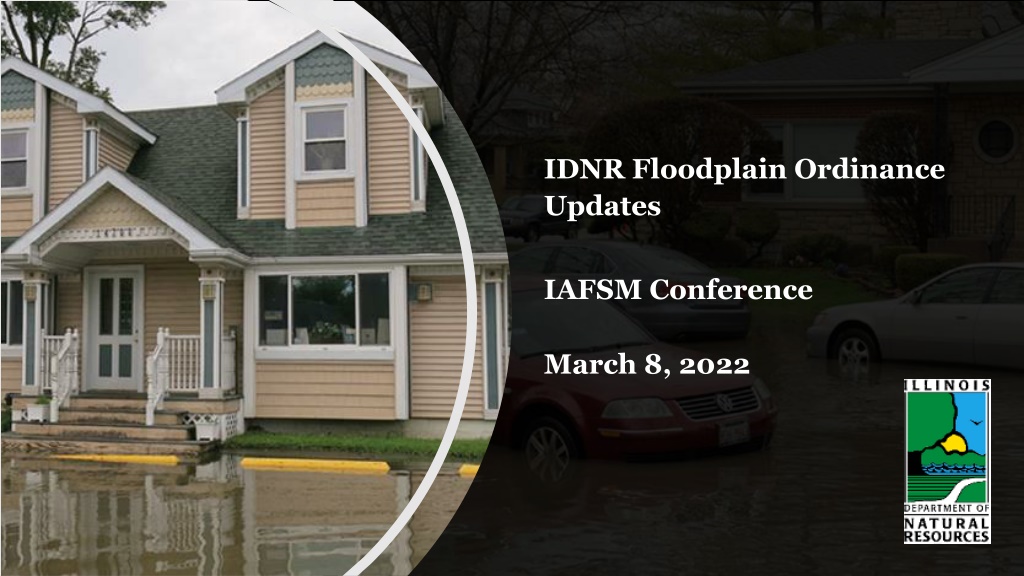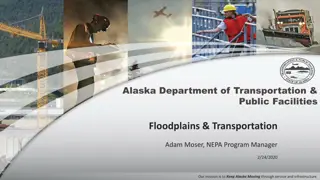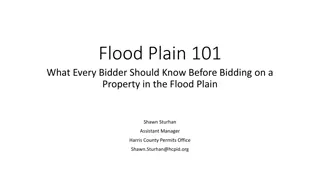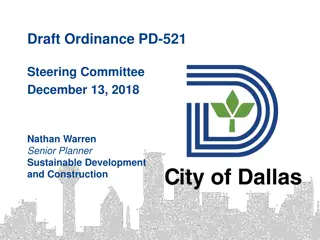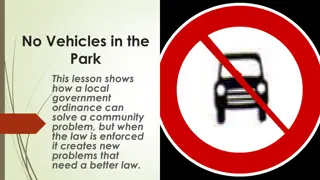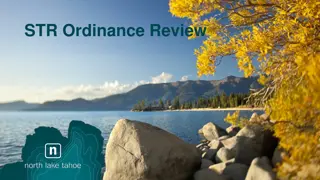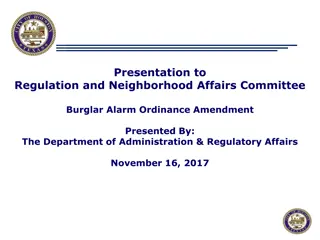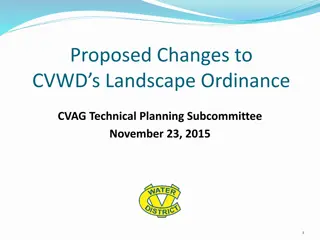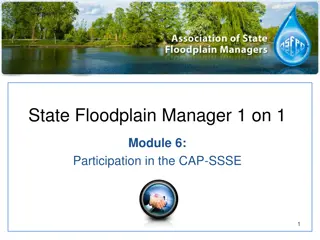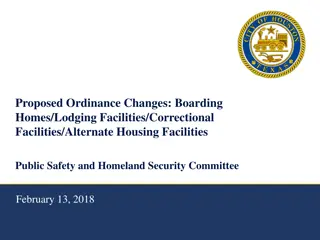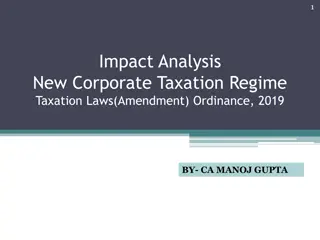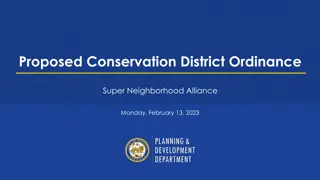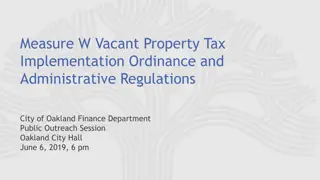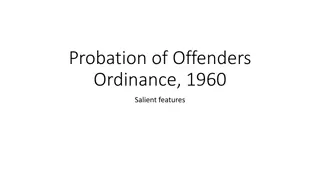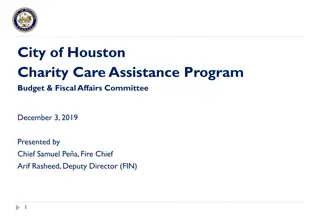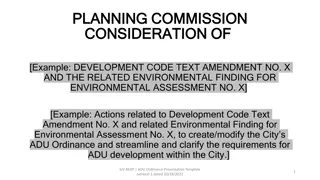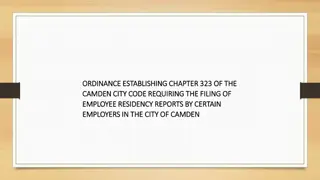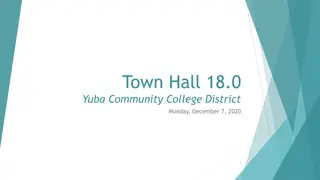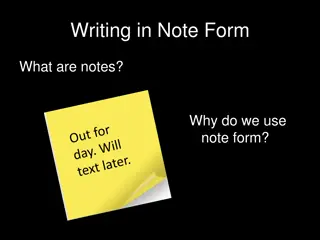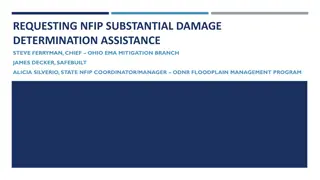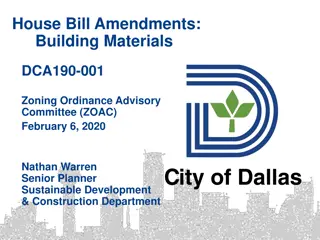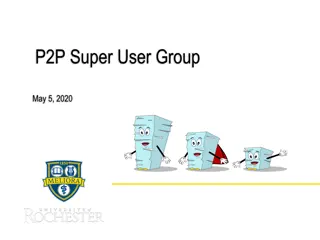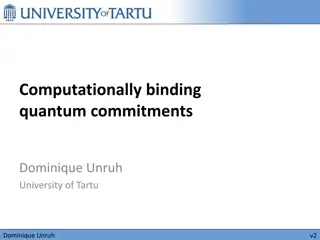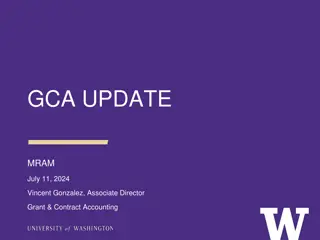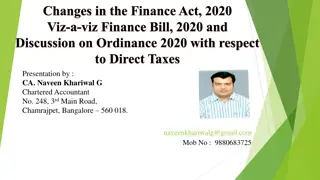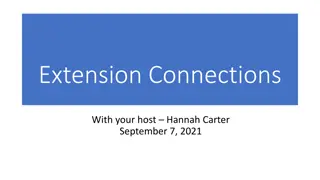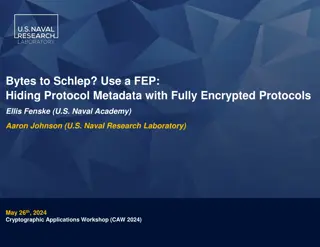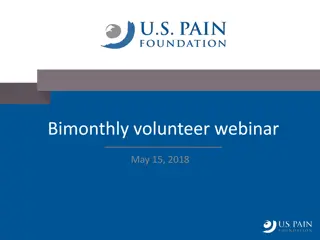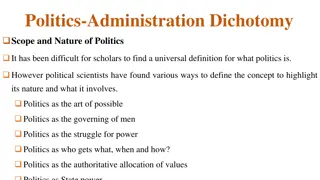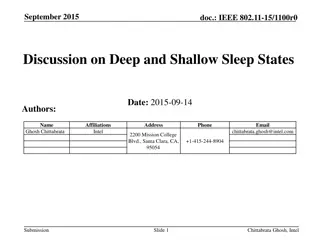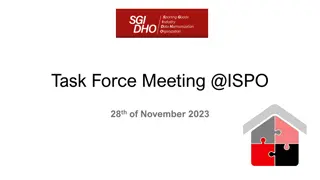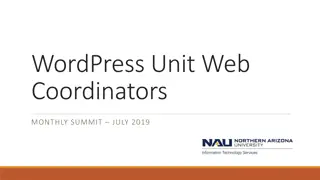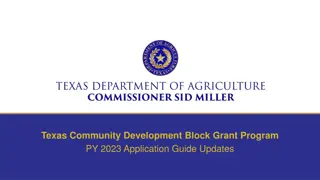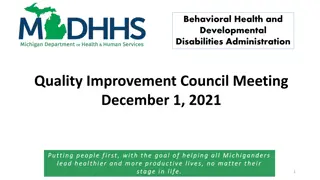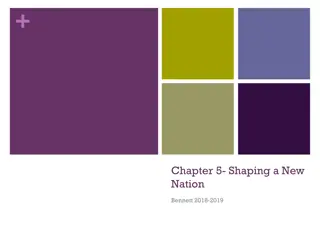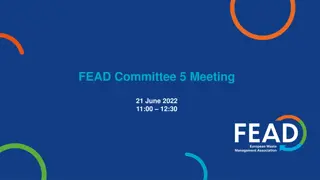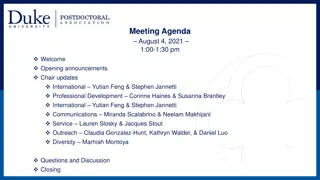Updates to IDNR Floodplain Ordinance and New Definitions
This content provides information on the updates to the IDNR Floodplain Ordinance including new responsibilities for Floodplain Managers, clarification on Critical Facility reviews, and the addition of new definitions such as Accessory Structure and Agricultural Structure. It also emphasizes the importance of protecting Critical Facilities during flooding events to ensure the health and welfare of the community.
Download Presentation

Please find below an Image/Link to download the presentation.
The content on the website is provided AS IS for your information and personal use only. It may not be sold, licensed, or shared on other websites without obtaining consent from the author. Download presentation by click this link. If you encounter any issues during the download, it is possible that the publisher has removed the file from their server.
E N D
Presentation Transcript
IDNR Floodplain Ordinance Updates IAFSM Conference March 8, 2022
Catalyst New FEMA Guidance 2
Add Floodplain Manager duties including substantial damage/improvement procedures Clarify Critical Facility review BFE in A Zones Add CLOMR requirement for fill in Floodway Add references to Technical Bulletins for flood openings and building on fill Link Start of Construction definition to permitting process Add Stop Work order to Penalties Expand variance section to outline process Additional Changes 3
New or Amended Definitions New or Amended Definitions Accessory Structure Agricultural Structure Conditional Letter of Map Revision (CLOMR) Critical Facility Dam Development IDNR /OWR Jurisdictional Stream LOMA and LOMR Start of Construction Violation 4
New Definitions New Definitions Accessory Structure - A non-habitable building, used only for parking of vehicles or storage, that is on the same parcel of property as the principal building and which is incidental to the use of the principal building. Agricultural Structure - A walled and roofed structure used exclusively for agricultural purposes or uses in connection with the production, harvesting, storage, raising, or drying of agricultural commodities and livestock, including aquatic organisms. Structures that house tools or equipment used in connection with these purposes or uses are also considered to have agricultural purposes or uses. 5
Definition Change Definition Change Critical facility Critical facility Critical Facility - Any facility which is critical to the health and welfare of the population and, if flooded, would create an added dimension to the disaster. Damage to these critical facilities can impact the delivery of vital services, can cause greater damage to other sectors of the community, or can put special populations at risk. Examples of critical facilities where flood protection should be required include: emergency services facilities (such as fire and police stations), schools, hospitals retirement homes and senior care facilities, major roads and bridges, critical utility sites (telephone switching stations or electrical transformers, and hazardous material storage facilities (chemicals, petrochemicals, hazardous or toxic substances). 6
Definition Change Definition Change - - Development Development OLD Exceptions Development does not include routine maintenance of existing buildings and facilities, resurfacing roads, or gardening, plowing, and similar practices that do not involve filing, grading, or construction of levees. NEW Exceptions Development does not include resurfacing of pavement when there is no increase in elevation; construction of farm fencing*; or gardening, plowing, and similar practices that do not involve filing, grading, or construction of levees. * Outside of NE Illinois 6 counties 7
Text changes Text changes BFE determination BFE determination Remove references to Illinois State Water Survey as a depository. Removes record flood plus 3 feet. 8
Text changes Text changes Development Permit Development Permit Expanded list of what must be submitted Provides for an overall permit expiration and requires work on new buildings to start in 180 days or permit expires (Start of Construction) As-built documentation expanded, allowing Elevation Certificates, Floodproofing certificates to be required. Requires a sign-off on the floodplain development permit before an occupancy permit can be issued Expanded to include an optional fees section for communities without a fee ordinance or a building permit process Explains that a LOMR-Floodway is required if floodway needs to be corrected 9
Text changes Text changes - - Critical Facility Critical Facility No feasible alternative site language removed. FPA required to compare a site s ground elevation for critical facility to the 0.2% annual chance flood elevation. Clarifies that buildings must have lowest floor elevated to 0.2 % flood elevation or 1% elevation plus 3 feet. Adequate parking for staffing of facilities must be provided above the BFE required. Access routes to be reviewed and should be above the BFE. Critical facilities list in body of the ordinance. Floodproofing and sealing measures listed as a protection measure. 10
Text changes Text changes LOMRs/ CLOMRs LOMRs/ CLOMRs CLOMR required for BFE increases due to floodway. encroachments or BFE increases in a Zone A. Clarifies that grading permits may be issued but no permits for buildings before the LOMR is issued. Clarifies LOMR-Based on Fill and gives communities opportunity to outright prohibit basements in any fill used to elevate a site above the BFE. If basement allowed, calls out TB 10-01 and explains Reasonably Safe responsibilities of the local FPA. 11
Text changes Text changes Start of Construction Start of Construction Per the NFIP federal code all permits must expire in 180 days if the start of construction has not begun. Start of construction definition is concerned with buildings not grading or utilities. Pouring of the slab, installation of piles, foundations, etc. To provide for new maps or LOMRs where the BFE increases. Some communities allow permits to last for 2 or 3 years. 12
Start of Construction and Permit Expiration Start of Construction and Permit Expiration A development permit or approval shall become invalid unless the actual Start of Construction, as defined, for work authorized by such permit, is commenced within 180 days after its issuance, or if the work authorized is suspended or abandoned for a period of 180 days after the work commences. All permitted work shall be completed within (*Insert twelve (12) months, eighteen (18) months or a local permit expiration period) after the date of issuance of the permit or the permit shall expire. Time extensions, of not more than 180 days each, may be granted, in writing, by the _____________. Time extensions shall be granted only if the original permit is compliant with this ordinance and the FIRM and FIS in effect at the time the extension is granted. 13
Text changes Text changes Accessory Structures Accessory Structures Maximum size 600 sq. ft. in keeping with FEMA guidance. No value limit listed, difficult with inflation and differences across the state in construction costs Permanent openings on at least 2 walls instead of all 4 walls, in keeping with TB 1. Does not restrict to residential properties 14
Text changes Text changes Agricultural Structures Agricultural Structures Entire subsection under Variances. Must be exclusive for agriculture production, harvesting ,storage, etc. No farm stands, wedding venues, or wine tasting rooms. State floodway permit required if in the floodway. Permanent openings on at least 2 walls, in keeping with TB 1. Restricts manure storage or livestock confinement. 15
Text changes Text changes Variances Variances Specifies that all records must be maintained: Technical justifications submitted by the applicant. Staff report and recommendations submitted by the floodplain administrator. The notification to property owner for increases in flood insurance. 16
Text changes Text changes Penalties Penalties Provides for a stop work order to suspend the development and provides for a hearing. Requires the notice of violation to be recorded. 17
Questions? Marilyn Sucoe NE Illinois Floodplain Advisor (847) 608-3181 Marilyn.sucoe@Illinois.gov Ashley Reimann FEMA Regional Specialist (312) 408-5563 Ashley.reimann@fema.dhs.gov 18
